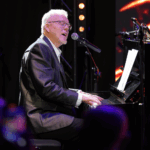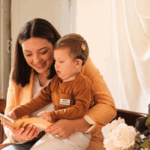
MED-EL
Published Nov 24, 2021
Childhood With ADHEAR and BONEBRIDGE: Isabella’s Story
Isabella from Denmark was born with hearing loss because of microtia and atresia. This year, the cheerful little girl started school with her bilateral BONEBRIDGE implants and SAMBA 2 audio processors. Today, Isabella’s mother Maria shares her daughter’s hearing journey and explains why she was determined to get a MED-EL bone conduction implant for her daughter.
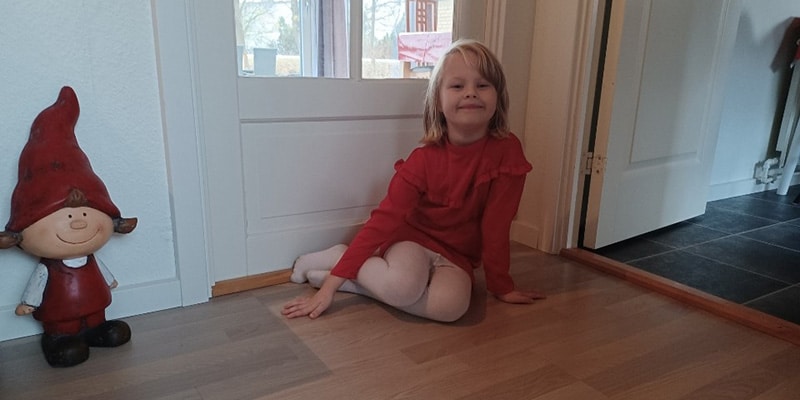
I’m Maria, a single mother to Isabella, who is six years old, and Benjamin, who is three years old. We live in Bolderslev, a little town in the south of Denmark. Isabella is a cheerful, caring, and very social girl. She loves spending time with her friends and meeting up with them to play in her spare time.
Diagnosis: Microtia and Atresia
Isabella’s hearing loss was discovered right at birth, as she was born with microtia and atresia, which means that she has small ears and closed ear canals. She didn’t pass the newborn hearing screening at the hospital when she was born, so we were sent for further testing at a hearing clinic where she had to undergo several specific tests and measurements. Isabella had measurements taken with electrode arrays in her cheeks, forehead, and other places on her face, as well as a hearing test using bone conduction to examine her hearing loss more precisely.
Isabella received her first hearing aid the same day; she was six weeks old at the time. It was an intense experience, but she never lost her smile throughout. The device Isabella received was a bone-conduction hearing aid on a headband. A few months later, she got another hearing device, also on a headband. At around the age of one, she got a second hearing device—so she now had one on each side to be able to hear in stereo.
The headband really irritated Isabella because it kept sliding down over her ears. When she was able to do it herself, she would push it up again. This meant that it sat in various positions around her head, but not where it should have been—behind her ears.
A New Bone Conduction Hearing System
When Isabella was around two-and-a-half years old, we were offered the non-surgical ADHEAR bone conduction system to test. We were extremely happy with the device. The only irritating thing was that the adhesive adapter would sometimes come loose, especially when Isabella sweated. After a couple of years, we decided that Isabella should have a BONEBRIDGE bone conduction implant as a more permanent solution.
She started school in August 2021, and so for a long time our wish was for Isabella to get an implant well ahead of time so that she could get used to the new solution and new hearing before she had to start school. We therefore talked a lot with Isabella’s speech and hearing loss consultant from our Center for Høretab (Center for Hearing Loss) and with a representative from MED-EL.
Through personal conversations, follow-up questions and deliberations over the phone, both of these organizations have helped me to support Isabella as best as possible then, now, and in the long-term.
Choosing a Bone Conduction Implant
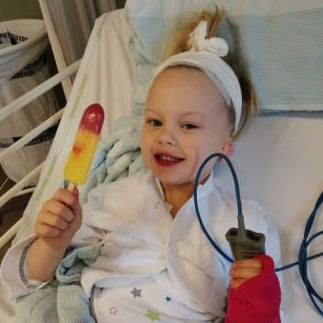
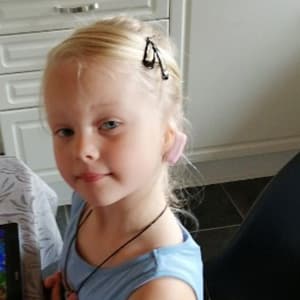
As Isabella’s mother, I was quick to reject a screw solution for several reasons. This was partly because I couldn’t bear there being a screw sticking out of my daughter’s head, but also due to hygiene considerations surrounding the screw—keeping the area clean and free of infection, especially with long hair around the screw.
Personally I don’t like the screw solutions. An implant solution had to be better—with a magnet under the skin that is not in contact with anything on the outside.
Both surgeries went relatively smoothly. The first went very well, both during and after. Isabella experienced a little more pain after the second operation, but nothing she couldn’t handle. She has managed so well throughout the whole thing, so I am a very proud mother!
Getting Used to a New Way of Hearing
The only change from ADHEAR to SAMBA 2 and BONEBRIDGE was after her activation, when Isabella had a few difficulties if there were too many people speaking at the same time, such as at larger gatherings. In these situations, Isabella gets closer to me so she can hear what I am saying to her.
I don’t remember experiencing this with ADHEAR, but of course she’s older now so her surroundings are more complex, and she can more easily express herself and tell me what she is experiencing. She has always come to me herself when the devices run out of battery or she’s having problems with a lack of sound, for example. In fact, she has come to me herself ever since she could speak, at around the age of two.
Today, Isabella manages pretty much everything herself. She takes the processors on and off herself, and brings her with her whenever we go somewhere so that she can always put the processors on the nightstand’s “head” and know where they are when she’s not wearing them.
Isabella gets help with replacing the battery and daily maintenance, but if the processors ever happen to pop off while we’re out and about she’ll put them back on herself. She instantly realizes that she’s not getting any sound and puts them back in place.
I haven’t seen her explaining to others why she has hearing aids but when she asks me:
"I always explain to her why she has them: to help her hear, just like mom has glasses that help her see."
Those who know Isabella from her time in kindergarten have always been good at explaining to other children who ask “Why is she wearing those?”
Isabella knows full well that she has them because she can’t do without them. She’s never thrown them on the floor, not even when she was little. I think she’s been able to feel the difference and she’s always understood that they’re helping her – whether it’s been the ADHEAR or the SAMBA 2 processors.
My Advice for Other Parents
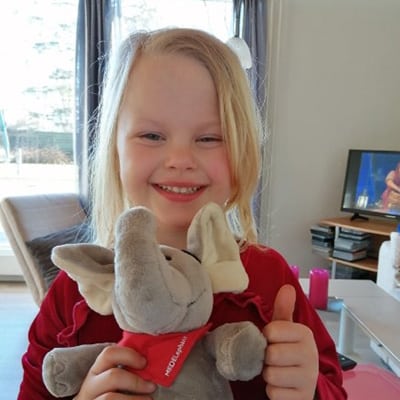
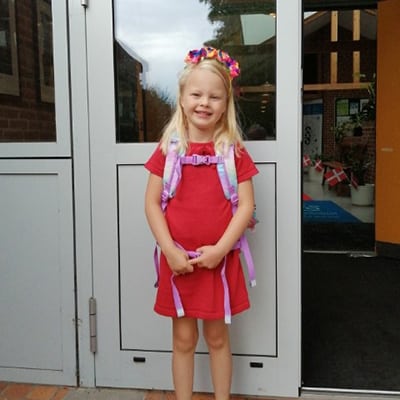
My advice to other parents who, for whatever reason, have a child with hearing loss is to accept it as best you can right from the start.
"It was hard for me to begin with when I was dealing with it alone but I accepted it pretty quickly and could see a change once she got her first device as a young baby."
With respect to the hospital, stick to your decision if there is something you do or don’t want. Stick to your guns! Talk to someone about it if you can. Personally, I’m always happy to answer questions if anyone has any. And last but not least, join the various groups on social media and follow others who have tried similar things.
Thank you, Maria!
References

MED-EL
Was this article helpful?
Thanks for your feedback.
Sign up for newsletter below for more.
Thanks for your feedback.
Please leave your message below.
Thanks for your message. We will reply as soon as possible.
Send us a message
Field is required
John Doe
Field is required
name@mail.com
Field is required
What do you think?
The content on this website is for general informational purposes only and should not be taken as medical advice. Please contact your doctor or hearing specialist to learn what type of hearing solution is suitable for your specific needs. Not all products, features, or indications shown are approved in all countries.

MED-EL

MED-EL
